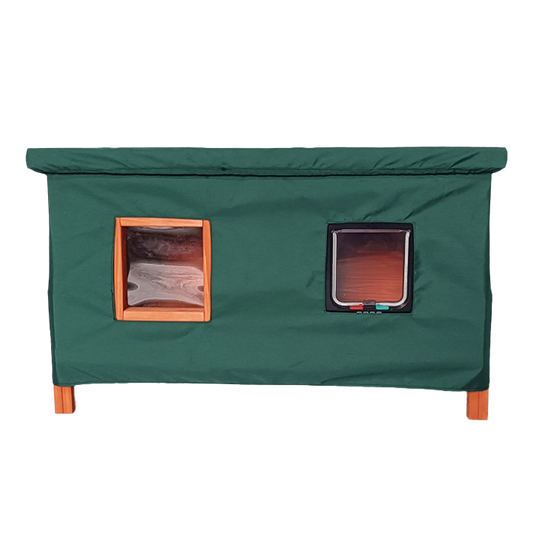By Karen Cornish
Whether you’re on a dog-friendly holiday at the seaside or live close enough to the coast for a beach day out, follow our top tips to keep your pet safe on the sand this summer.
Choosing a beach
With so many glorious beaches in the UK there are many miles of coastline to explore with your four-legged friend. Even in the busiest seaside resorts there are usually dog-friendly beaches to be found, but these may be situated slightly along the coast.
Outside of holiday season most beaches are a free-for-all but watch out for any restrictions that come into force during the summer months. Beaches that do not allow dogs should be clearly marked with signs and before you arrive at your destination it is a good idea to check with the tourist information office or local council to find out where you can and can’t bring your dog.
If a particular coastal area is designated a nature reserve, it often means that dogs need to be kept on lead and under close control to protect wildlife.
Beach hazards
Watch out for objects that wash up on the shore that could be dangerous to a dog. Bits of driftwood, sharp shells and broken glass can all cause damage to paws if stepped on. There have also been incidents of dogs becoming ill after eating things like rotting fish, seaweed, and palm oil that they have picked up on the beach.
If your dog likes to explore rock pools, look out for jellyfish that could give them a nasty sting or crabs that could nip their feet. Stay nearby when your dog is exploring so that you can try to spot hazards before they do.
Check your tide times
Some beaches in the UK can have sandbanks that become cut off from the mainland at high tide so make sure you are aware of any such areas before you venture out. The BBC website is a good place to find out the tide times for where you are. Visit www.bbc.co.uk/weather/coast-and-sea/tide-tables and enter the closest town or postcode.
At times of low tide be vigilant of riptides – strong currents that could pull a paddling dog under water and away from shore. If the sea is rough with big waves, it is best to keep your dog from going into the water, or keep them on a long lead.
If conditions are good and you allow your dog in the water, it is a good idea to give them a canine buoyancy aid to wear. Doggie life vests are lightweight, come in all sizes and will greatly reduce a dog’s risk of drowning.
Keep off the dunes
Sand dunes are an important habitat for birds, rodents, reptiles, and lizards, as well as acting as barriers against flooding from storm surges. Dogs can easily damage dunes by digging or kicking up of sand as it can make them unstable and can cause them to collapse. Keep your dog to the beach or on designated paths through dunes to avoid any unintentional erosion.
Heatstroke
If you are on the beach on a hot day, it is a good idea to have familiarised yourself with the signs of heatstroke in dogs. Heat exhaustion can prove fatal if not treated quickly so keep an eye on your pet if they are sunning themselves.
If your dog starts panting heavily, encourage them into a shady area and offer them a drink to prevent their condition developing into heatstroke. You could also put a damp towel on your dog to help cool them down. If your dog pants excessively, foams at the mouth, shakes or becomes disorientated with an increased heart rate, you should get them to a vet as soon as possible.
Dogs with particularly thick coats or flat faces will find it more difficult to regulate their body temperature than other dogs and will be at greater risk of heatstroke.
What to pack
Don’t forget to include everything your pet needs in your beach bag. Here’s a few essentials to remember:
· Fresh water. You’ll need a good supply of fresh drinking water for your dog and a travel bowl for them to use on the beach. If your thirsty dog tries to drink sea water, it is likely to make them vomit.
· Shelter or shade. A beach umbrella or pop-up shade will help to keep your dog out of the hot sun.
· Blanket. To protect your pet from hot sand, it is a good idea to pack a blanket for them to lie on.
· Toys. A toy or two will help to keep your dog entertained on the beach and distract them from trying to play with unsafe things they might find – like litter or driftwood. Frisbees and floating toys are a good choice for dogs that like to play fetch, but make sure you don’t throw them out to sea in case your dog suddenly finds itself struggling in deep water.
· Towel. After a dip or paddle in the sea you’ll need to rinse your dog off thoroughly to remove any salt or sand from the coat. If left, your dog’s skin could dry out and become irritated. Rub your dog down with a towel to dry them off before you leave so they do not get cold.
· Poo bags. It is very important to pick up after your pet to keep the beach clean and safe for everyone to use. Make sure you’ve got a good stash of poo bags with you.
· Sun cream. On a very sunny day, a dog can get sunburnt – especially if they have a thin, light-coloured coat or patches of their body with little hair. Choose sun protection that is specially designed for use on pets and pay particular attention to your dog’s nose and tips of the ears.
If you enjoyed this article, why not read:
Unleashing Fun in the UK's Top Dog-Friendly Destinations
Dog hydration and keeping dogs cool this summer
Walk in Style: The Ultimate Guide to Stylish and Functional Dog Harnesses









